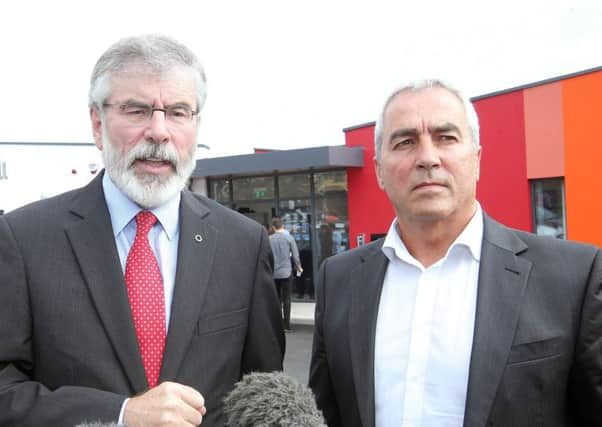Election Diary: SF man abandons '˜no red lines' strategy


After weeks of Sinn Fein figures steadfastly refusing to give any red lines – beyond the removal of Arlene Foster as First Minister – before going back into government, Pat Sheehan has firmly given at least three “red lines” which must be met before his party re-enters the Executive.
On Wednesday’s BBC Talkback, Alex Maskey said clearly “we’ve been very cautious about using the term ‘red lines’” and on Nolan Live that night Máirtín Ó Muilleoir again doggedly refused to state clearly what conditions would have to be met before power-sharing with the DUP once more.
Advertisement
Hide AdAdvertisement
Hide AdHowever, Stephen Nolan was present at an election hustings event on Thursday night at which he said that Mr Sheehan had “emphatically” three times that Sinn Fein had several red lines. Mr Nolan then interviewed the former West Belfast MLA who said: “We’re not going to go back into an Executive until all the...there were three issues that have been agreed previously, so you had the Irish language act, there was a thing called a bill of rights and there was another issue, an agreement to deal with the legacy of the conflict, you know, in regard to people who were killed during the conflict. We need to see those agreements implemented.”
When asked if that was a promise to voters about what was required before going back into government, Mr Sheehan said: “Yeah....unless the outstanding agreements are implemented.”
Extra 25,000 people join register
Details of the final electoral register show that 1,254,709 people are eligible to vote next week.
The register was updated on December 1 – before the slightest hint of a snap election – and 56,606 names were removed due to individuals’ failure to return forms from the last household electoral canvass three years earlier.
Advertisement
Hide AdAdvertisement
Hide AdAt that point, the total electorate dropped to 1,234,354. By January 3, with no real prospect of an election, it had risen by just 3,238.
However, since then it has increased by another 21,619 (the eligible electorate for the Assembly election is slightly lower than the total electorate).
By contrast, just 10,470 people joined the electoral register in the two months before last year’s Assembly election.
The figures are broken down by ward and in so doing they go some way towards disproving Sinn Fein’s inference that the removal of the names from the register was some sort of official attempt to disenfranchise certain voters.
Advertisement
Hide AdAdvertisement
Hide AdJust a month ago, Sinn Féin MP Francie Molloy issued a statement which “accused the British government of political interference and discrimination in the upcoming Assembly election by denying more than 60,000 people the right to vote”.
In fact, the breakdown of the figures shows that there has been a slight drop in every single constituency across Northern Ireland, rather than any particular area falling disproportionately.